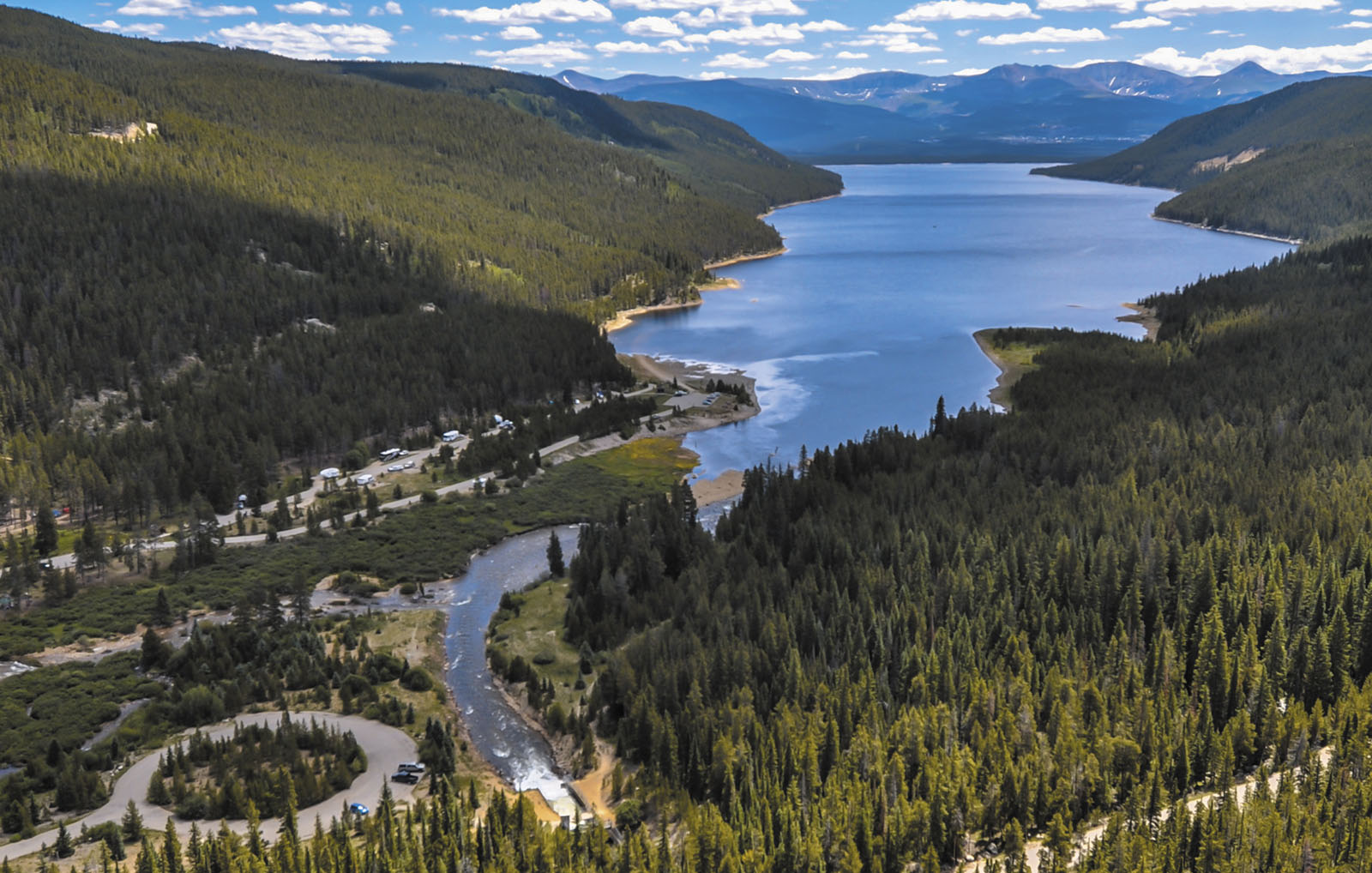Monsoonal weather continued during the past week, ending drought conditions in southern Chaffee County and continuing to lessen drought severity across the Arkansas Basin.
Only a sliver of southeastern Colorado continued to experience the most severe drought designation in the latest U.S. Drought Monitor report. That report is a week old, so the next Drought Monitor map should show even more improvement when it is released Thursday.
July 1 signaled the beginning of the Voluntary Flow Management Program‘s (VFMP’s) flow targets to support an extended whitewater boating season on the upper Arkansas River.
Through the VFMP, owners of Fryingpan-Arkansas Project water agree to release up to 10,000 acre-feet of water from upper-basin Fry-Ark reservoirs (Turquoise and Twin Lakes) to benefit whitewater recreation from July 1 until Aug. 15.
The Southeastern Colorado Water Conservancy District, which manages Fry-Ark Project water, has reported 44,136 acre-feet of Fry-Ark water imports this year, ensuring adequate supplies to meet VFMP target flows.
The Community Collaborative Rain, Hail and Snow Network (CoCoRaHS) reported the following precipitation amounts for the past week:
- Leadville – 1.20 inches.
- Buena Vista – 0.65-0.78 inch.
- Salida – 0.45-1.14 inches.
- Westcliffe – 0.32-0.91 inch.
- Cañon City – 0.10-0.26 inch.
- Walsenburg – 0.11-0.99 inch.
- Trinidad – 0.42-0.50 inch.
- Pueblo – 0.16-1.60 inches.
- Colorado Springs – 0.45-1.14 inches.
- Rocky Ford – 0.39-0.70 inch.
- Pritchett – 1.02 inches.
- Lamar – 0.99-1.40 inches.
Reservoir Storage
Reservoir data from the U.S. Bureau of Reclamation shows the water level in Pueblo Reservoir dropped slightly to 60.6% full with 195,633 acre-feet of water in storage.
The Bureau reported increased inflows to Turquoise and Twin Lakes reservoirs as a result of monsoon precipitation. As a result, Turquoise Lake water storage increased to 109,471 acre-feet or 84.6% full. Twin Lakes storage decreased slightly to 117,564 acre-feet, 83.4% full as the Bureau increased outflows to 237 cfs.
The U.S. Army Corps of Engineers indicates a slight decrease in the amount of water stored in John Martin Reservoir to 20,640 acre-feet.
Arkansas River flows increased to 125 cfs near Leadville thanks to monsoonal precipitation, but flows below Granite dropped nearly 100 cfs during the past week to 530 cfs.
Flows at the Wellsville gauge dropped to 856 cfs but remained above the VFMP target of 750 cfs. The Cañon City gauge currently reports 704 cfs.
Flows below Pueblo Dam are currently 842 cfs and are 1,170 cfs near Avondale. Near Rocky Ford, flows are 443 cfs, and below John Martin Reservoir, 519 cfs. The gauge at Lamar reports 98.7 cfs.
River Calls
Currently, the Arkansas Basin has 16 active calls. Calls on the mainstem include the Oxford Canal (1887 priority), the X-Y Irrigating Ditch (1889), the Lamar Canal (1890) and the 1949 Arkansas River Compact at the Kansas state line.
The Titsworth Ditch, with its 1863 priority date on Fourmile Creek, remains the most senior calling water right in the basin, followed by the Model Ditch on the Purgatoire River (1865).
The Hayden Supply Ditch (1866) continues to call for water on Greenhorn Creek, as does the Gonzales Ditch (1866) on the Apishapa River and the Welton Ditch (1889) on the Huerfano River.
Other calls are from the Harrington Ditch (1868) on Hardscrabble Creek, Upper Huerfano No. 1 on the Huerfano River, the RB Willis Ditch (1870) on Wahatoya Creek, and the Cameron Ditch (1882) on the North Fork of the South Arkansas River above Poncha Springs.
The Arkansas River Report is provided by the Arkansas Basin Watershed Collaborative, the nonprofit organization for the Arkansas Basin Roundtable, a group of water managers and stakeholders working with state agencies to find solutions to water-related issues in the basin. Roundtable members serve as the ARWC Board of Directors.








